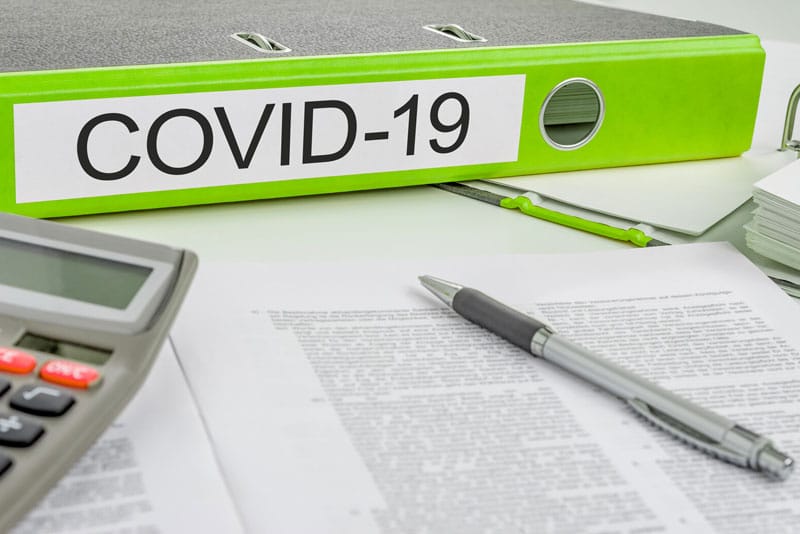Coding COVID-19 encounters is complex and the rules are continually changing. Claims must have a COVID-19 related diagnosis code to be recognized by insurance companies as a COVID-19 related service. Many physicians’ practices are relying on medical billing and coding services to stay up to date with COVID-19 reporting guidelines and submit accurate claims.
Documenting and coding COVID-19 diagnosis
The correct diagnosis codes should be assigned for: Positive COVID, Suspected COVID and Exposure to COVID.
To report a confirmed diagnosis of the 2019 novel coronavirus disease (COVID-19), use ICD-10 code U07.1, COVID-19. This code is valid for discharges/date of service on or after April 1, 2020.
U07.1 – COVID-19 is the only diagnosis code available for both lab-confirmed COVID-19 and clinically diagnosed COVID-19. The official ICD-10 guidelines state that “confirmation does not require documentation of the type of test performed; the provider’s documentation that the individual has COVID-19 is sufficient”.
In addition, any contributory conditions should be reported as secondary diagnosis codes to the U07.1 diagnosis, such as:
- J12.89 Other viral pneumonia
- J20.8 Acute bronchitis due to other specified organisms
- J40 Bronchitis not specified as acute or chronic
- J22 Unspecified acute lower respiratory infection
- J98.8 Other specified respiratory disorders
- J80 Acute respiratory distress syndrome
An AAFP article published July 2020 cautions that if physicians use only symptom codes, patients may not be covered by their insurance companies and they will not be included in the disease registry. In the absence of a positive test, when documenting and coding for a patient who is clinically diagnosed with COVID-19 (without lab confirmation), the AAFP recommends that geographic location should be taken into account when assigning a clinical diagnosis since prevalence and incidence vary greatly not only across the United States but even in states.
The AAFP provides the following guidance on coding COVID-19 encounters in the three scenarios: ‘Patient with confirmed exposure or suspected exposure, not ruled out’, ‘Patient with suspected exposure, ruled out’, and ‘Patient with no known exposure’.
- Patient with confirmed exposure or suspected exposure, not ruled outIf test results are positive –
- Clinical suspicion remains: U07.1 + symptom codes
- With symptoms: U07.1 + symptom codes
- Without symptoms: U07.1 only
If test results are negative –
- With symptoms: symptom codes + Z20.828 Contact with and (suspected) exposure to other viral communicable diseases
- Without symptoms: Z20.828
If testing ordered and / or pending –
- Clinically diagnosed: U07.1 + symptom codes
- Clinically uncertain: Z20.828
If testing not done (no lab) –
- Clinically COVID positive: U07.1 + symptom codes
- Clinically COVID negative: Z20.828 + symptom codes
- Patient with suspected exposure, ruled outIf test results are available and positive –
- Clinical suspicion remains: U07.1 + symptom codes
- With symptoms: U07.1 + symptom codes
- Without symptoms – U07.1
If test results available and negative –
- With symptoms: symptom codes + Z20.828
- Without symptoms: Z03.818, Encounter for observation for suspected exposure to other biological agents ruled out
If testing ordered and /or pending –
- Clinically diagnosed: U07.1 + symptom codes
- Clinically uncertain: Z03.818
If testing not done (no lab) –
- Clinically COVID positive: U07.1 + symptom codes
- Clinically COVID negative: Z03.818 + symptom codes
- Patient with no known exposureIn this case there are two scenarios: Asymptomatic and SymptomaticAsymptomaticIf test results available and positive – U07.1
If test results available and negative – Z11.59 (Encounter for screening for other viral diseases) screening for asymptomatic
Symptomatic
If test results are available and negative –
- Clinically COVID negative: symptom codes
- Clinical suspicion remains: U07.1 + symptom codes
If test results are available and positive – U07.1 + symptom codes
If testing ordered and/or pending –
- Clinically diagnosed: U07.1 + symptoms
- Clinically uncertain – symptom codes
If testing not done (no lab) –
- Clinically COVID positive: U07.1 + symptom codes
- Clinically COVID negative: symptom codes
Sequencing of Codes
When COVID-19 meets the definition of principal or first-listed diagnosis, code U07.1 should be sequenced first, followed by the appropriate codes for associated manifestations, except in the case of obstetrics patients.
Code U07.1 should be used as a secondary diagnosis if COVID-19 does not meet the definition of principal or first-listed diagnosis (for instance, if it develops after admission).
Fetal Exposure to COVID
For a newborn with a mother who is COVID positive:
- If the baby’s status is unknown, assign P00.2, Newborn affected by maternal infectious and parasitic diseases
- If the baby is tested during the hospital stay and COVID infection is ruled out, report Z05.1, Observation and evaluation of newborn for suspected infectious condition ruled out.
- If the baby tests positive for COVID, P00.2 and U07.1 should be reported to indicate the infection in the newborn.
Coders in reliable medical coding companies stay up to date on the official guidelines and industry recommendations for coding and reporting to help providers ensure accurate claims for COVID-19 patient encounters.




